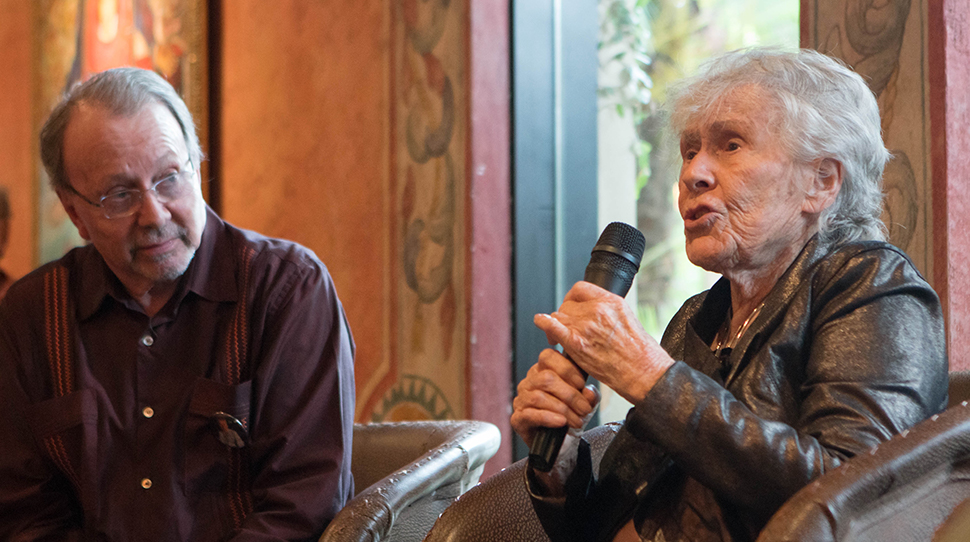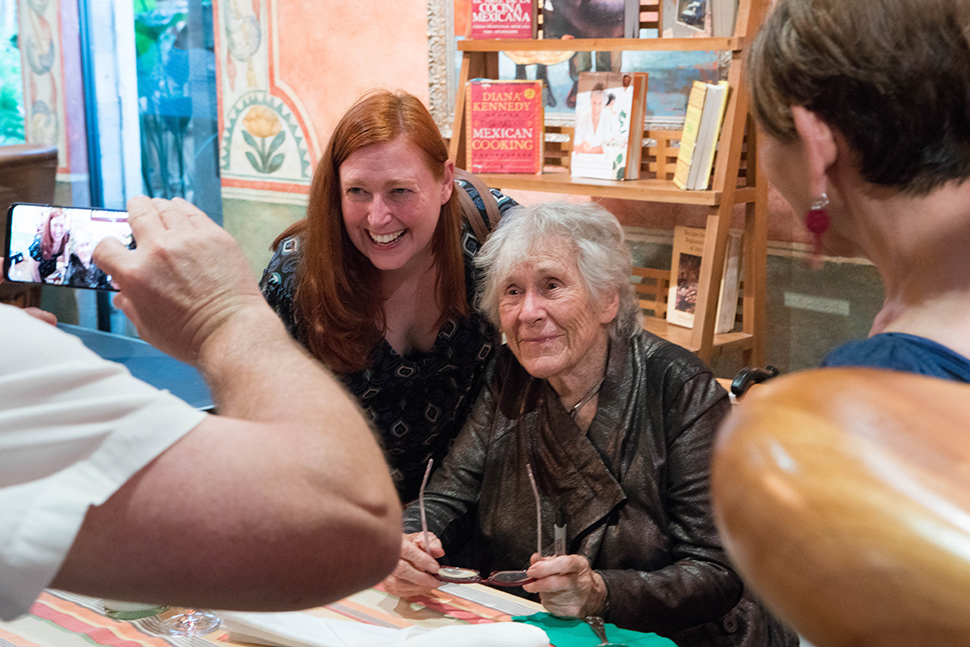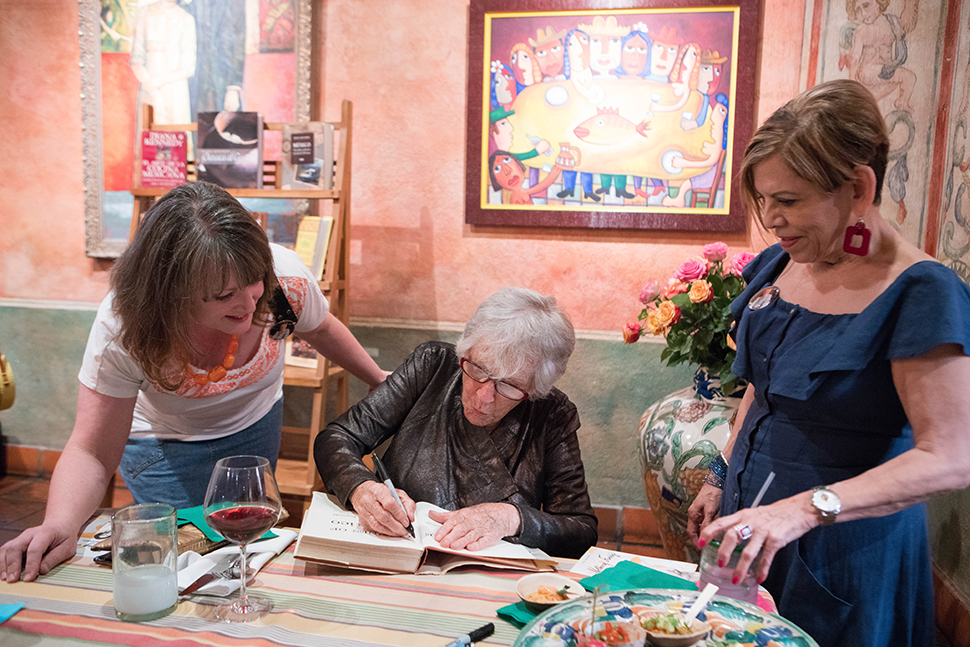

In her 1972 book The Cuisines of Mexico, food historian Diana Kennedy made waves when she referred to certain regional food north of the U.S. border as “Tex-Mex,” an American cuisine vaguely inspired by Mexican dishes but using ingredients (such as wheat flour, yellow cheese and cumin) brought to the New World by the Spanish. While her statement was certainly controversial, it also brought much attention to the well-loved cuisine and to San Antonio, the city considered to be its birthplace.
Now, the 96-year-old author is contributing to San Antonio’s culinary landscape in another big way: by donating her cookbook collection and personal archives to University of Texas at San Antonio Libraries Special Collections.
Kennedy’s 600-plus tomes will bring the library’s Mexican cookbook count to more than 1,900 volumes, making it one of the biggest collections in the U.S. Included are 11 19th-century Mexican cookbooks, collected across the country’s 31 states. The earliest (an 1828 edition) is so rare, that the only other known copy sold at an auction for $9,000.
Often referred to as “the Julia Child of Mexican cuisine,” British-born Kennedy has built a body of work from more than 50 years of research and travel throughout Mexico, where she moved with her late husband, New York Times correspondent Paul P. Kennedy, in 1957.
At the time, there was little written about the country’s diverse food landscape, but Kennedy recalls a series by Josefina Velazquez de Leon. The pioneer of Mexican gastronomy began publishing books on each state of Mexico in the 1930s before establishing a cooking school in the late 1950s.

“I had her books, but I wanted to know more,” Kennedy said. “She’d go to church groups and get recipes from people. But she didn’t talk about the landscape, the wild greens, the flowers, and she didn’t name the chiles. So I suppose, subconsciously, that’s what I wanted to do — fill in the gaps. I realized that what was written did not reflect the richness of the regional cuisines.”
Kennedy fell in love with the country’s diverse foodscape and traveled by bus, donkey and pickup truck to every state in Mexico, tasting her way through markets and learning from the locals she met in each village.
“I love to eat and eat well — and I was fascinated by the topography as well,” she said. “I knew what I wanted to record, and I just went out and did it. When you travel abroad, you need to try the local food, at all price levels, too, and see how the ingredients are treated and how meals are constructed and that sort of thing. You’ve got to fall in and do it. If you travel, that’s what you travel for — to learn something about a country.”
In 1965, Kennedy moved to New York City and began teaching Mexican cooking classes. She went on to publish nine different books, returning to Mexico through the years for research trips.
The 11 linear feet of archives she’s transferred to the UTSA Libraries include field notes, photographs and 35mm slides from these travels, along with handwritten drafts, recipe research notes, press clippings, digital files and correspondences with everyone from New York Times restaurant critic Craig Claiborne to Prince Charles.
In 1976, Kennedy decided to return to Mexico full time, initially living in Mexico City before settling several years later in the mountains of Michoacán, more than 200 miles west of the capital. There, she established Quinta Diana (The Diana Kennedy Center), an adobe homestead on more than seven acres where she still lives and grows much of her own food organically, including coffee beans and wheat.
She has been honored with the Order of the British Empire (a British order of chivalry rewarding contributions to the arts and sciences) and the Order of the Aztec Eagle (the highest decoration awarded by the Mexican government to foreign nationals).

The acclaimed author was also recently the subject of the documentary Nothing Fancy: Diana Kennedy, which was awarded a special jury prize after debuting at South by Southwest this past spring.
Following her recent visit to the University of Texas at San Antonio’s library, she appeared at the iconic Austin-based restaurant Fonda San Miguel to sign cookbooks and greet a sold-out crowd of fans.
When asked about her secrets to a healthy and happy life, the nonagenarian spitfire said, “I think you must exercise and be aware of what you’re eating — but don’t diet and don’t cut out fats. That’s just ridiculous! And don’t overdo everything but enjoy. You’ve got to enjoy life! I grow my own wheat and bake my own bread. I have organic eggs and I try not to use too much plastic. We must be aware of what humans are doing to this wonderful universe we’re living in.”
